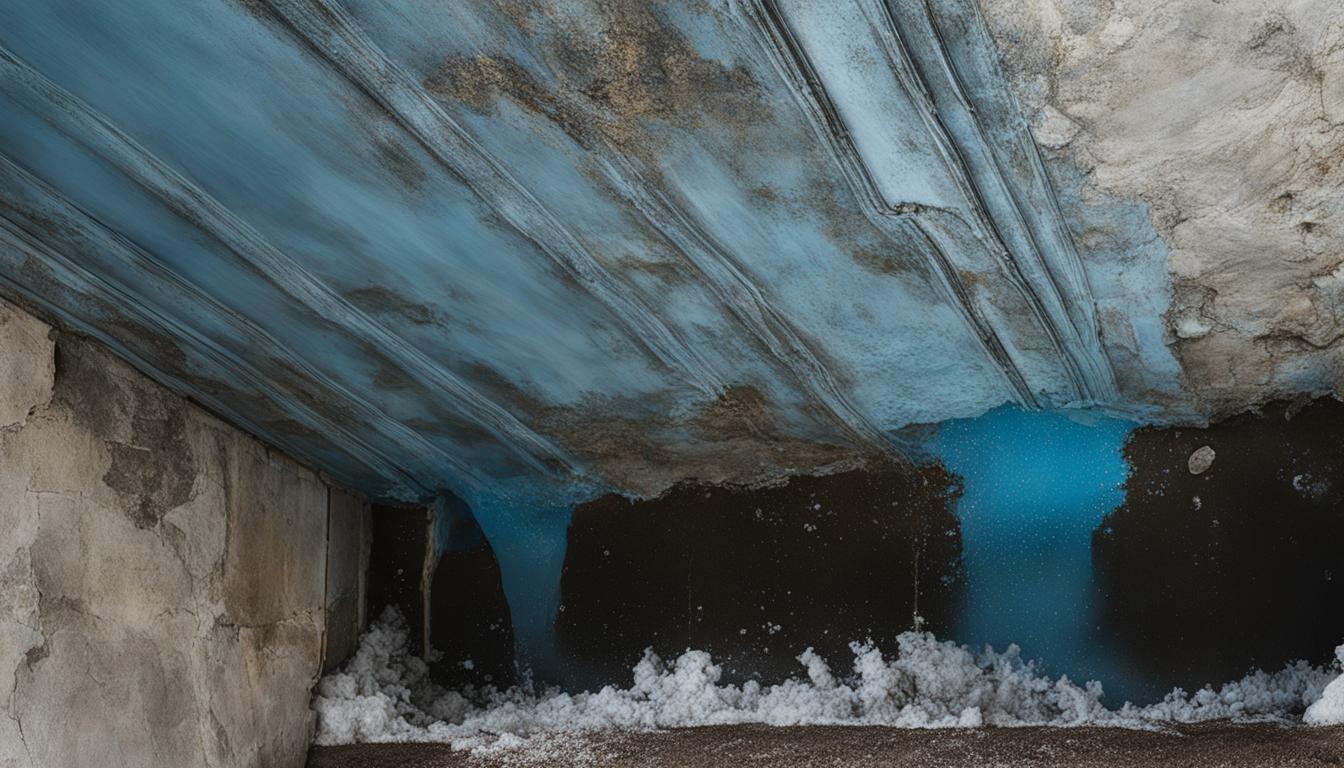Water damage can be devastating to your property. It can take various forms such as burst pipes, floods, or leaky roofs. In some cases, water damage is temporary and can be easily fixed. However, in other cases, it can be permanent and lead to long-lasting effects. The question is, how do you know if water damage is permanent?
In this section, we will explore the concept of water damage and its potential permanence. You will learn about the signs that indicate irreversible damage to your property caused by water. Understanding these signs can help you take the necessary steps to minimize the long-term effects of water damage.
It is crucial to understand the type of water damage on your property to determine the appropriate steps to take to remediate the situation. In some cases, professional cleaning and restoration services may be necessary to prevent long-term damage and hazards to your property.
Key Takeaways
- Water damage can be permanent and lead to long-lasting effects.
- Understanding the signs of irreversible water damage can help you take appropriate action.
- Assessing the extent of water damage on your property is crucial in determining the severity of the damage.
- There are different types of water damage, and knowing them will enable you to better evaluate the situation.
- Minimizing the long-term effects of water damage is vital in preventing further damage to your property.
Understanding the Types of Water Damage
Water damage is not a one-size-fits-all problem. There are many types of water damage, each with its unique characteristics and severity. Understanding these different types will enable you to better assess the extent of the damage and determine if it is likely to be permanent. Here are the various types of water damage:| Type | Description |
|---|---|
| Clean Water Damage | This type of water damage results from clean, potable water sources and typically poses no immediate health risks. |
| Gray Water Damage | This type of water damage results from used water such as from washing machines, dishwashers, or showers. The water may contain chemicals or microorganisms that can cause illness or infections. |
| Black Water Damage | This type of water damage results from sewage backups and may contain hazardous materials such as human waste, bacteria, and viruses. It poses a severe health risk and requires immediate attention. |
Assessing the Extent of Water Damage
Water damage can occur due to various reasons, including natural disasters, plumbing issues, or appliance malfunctions. It is crucial to assess the extent of the damage to determine whether it is temporary or permanent. By identifying the severity of the damage, you can take necessary steps to prevent further destruction and keep your property safe. First, inspect the affected area and look for visible signs of water damage, such as discoloration, peeling paint or wallpaper, and musty odors. These symptoms can indicate the presence of water damage that has already caused lasting effects. Next, measure the extent of visible water damage using a moisture meter or hygrometer. These devices can help you determine the level of moisture in various materials, such as drywall, floors, and ceilings. By measuring the moisture content, you can identify areas that may still be wet and require further drying or restoration. It is critical to act quickly to rectify any water damage to prevent further deterioration of the affected area. Based on the extent of the damage, you may need to hire a professional restoration company to carry out remediation measures. A timely response can prevent irreversible damage and save you from costly repairs in the future.Signs of Irreversible Water Damage
If left untreated, water damage can cause lasting harm to your property. Irreversible water damage occurs when the materials affected by water cannot be salvaged and must be completely replaced. Here are the signs to look out for in identifying irreversible water damage:- Warping or rotting of wood
- Swelling or disintegration of drywall
- Mold growth
- Staining or discoloration of surfaces
- Musty odor
Conclusion
You now have a comprehensive understanding of how water damage can impact your property. By learning about the different types of water damage and assessing the extent of the damage, you can determine if it is likely to be permanent. Recognizing the signs of irreversible damage is crucial in taking appropriate action to minimize the long-term effects and prevent further damage. Remember to always prioritize safety when dealing with water damage. If you are unsure about the severity of the damage, it is best to seek professional help. Additionally, taking preventative measures such as regular maintenance and keeping an eye out for potential issues can go a long way in preventing water damage from occurring. By following the steps outlined in this article, you can rest assured that you are equipped to handle water damage and mitigate its effects. Don't wait until it's too late - assess your property today and take necessary action to prevent permanent damage. Thank you for reading and remember to stay vigilant when it comes to water damage.FAQ
Is water damage permanent?
Water damage can be permanent depending on the extent and severity of the damage. Certain signs indicate irreversible damage to your property caused by water.
What are the types of water damage?
There are different types of water damage, including flooding, plumbing leaks, roof leaks, and sewage backups. Understanding these types can help you assess the severity of the damage.
How can I assess the extent of water damage?
To assess the extent of water damage on your property, you can look for visible signs such as water stains, mold growth, warped or crumbling materials, and musty odors. It is essential to evaluate the damage to determine if it is temporary or permanent.
What are the signs of irreversible water damage?
Signs of irreversible water damage include structural damage, severe mold growth, persistent musty odors even after drying, and warped or crumbling materials. Recognizing these signs is crucial for taking appropriate action to minimize long-term effects.
What is the conclusion?
In conclusion, it is important to assess water damage, recognize the signs of irreversible damage, and take necessary steps to mitigate its effects. By understanding the types of water damage and evaluating the extent of the damage, you can prevent further damage and minimize long-term consequences.





